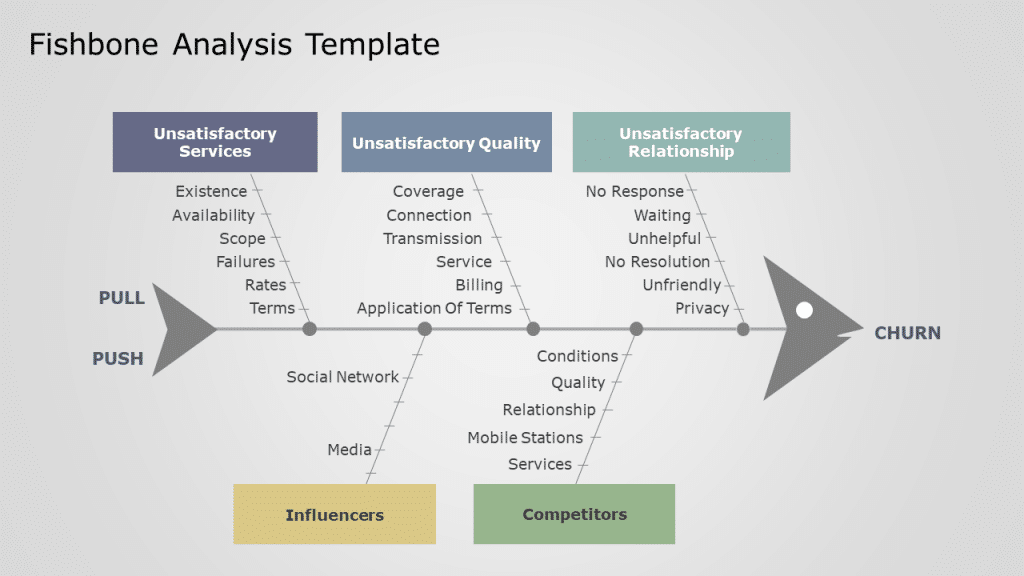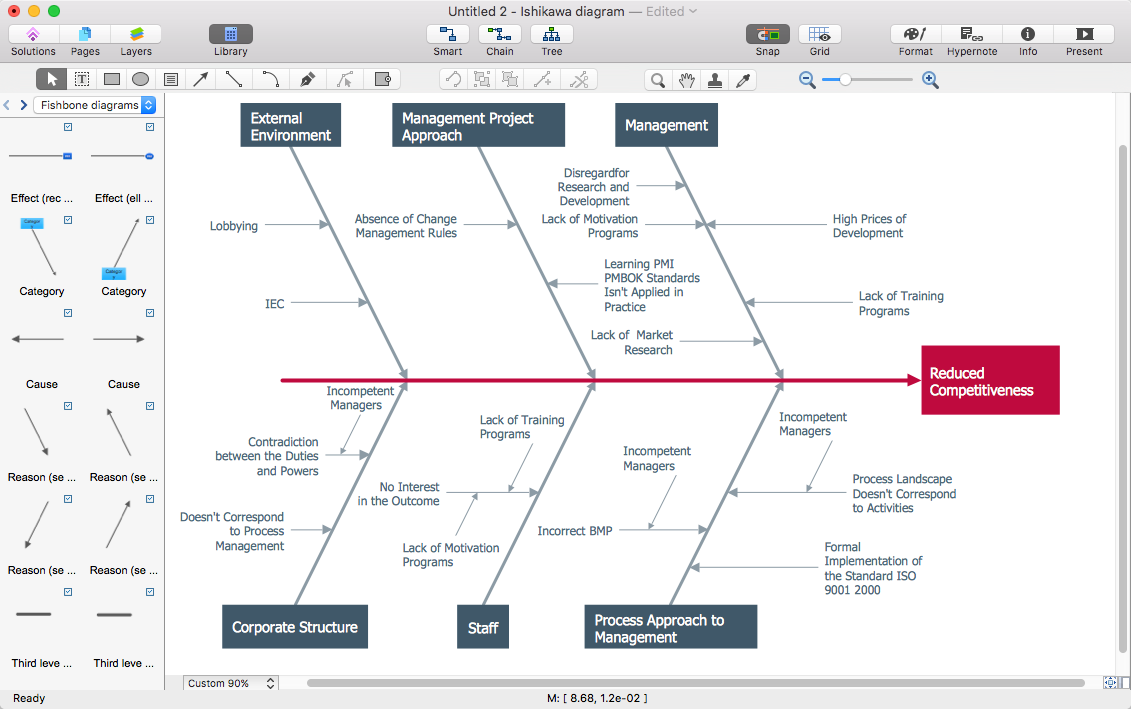

Now that you’re already familiar with how the fishbone diagram works, there are many ways in which you can adopt this process within your organization: You can easily check out a template that you can follow for your own process. The Weje service has been useful for a lot of businesses that are creating their fishbone diagram. While you can start creating your fishbone diagram by doodling on a board or on paper, you will eventually need a tool to help you put things together a lot more easily. This will take some time to complete, but it’s a great way of really putting things in perspective down to the very minute details, so you can get more clarity out of the situation. Expand these branches further by listing causes and sub-causes.You can list for to eight main causes depending on the problem that you’re trying to solve. Draw the backbone of the fish on the left and create the branches by listing down the different causes that you’ve identified while brainstorming with your team.

Start by drawing the head of the fish on the right side of the diagram, which will represent the problem that you’re trying to analyze and solve.
#Make ishikawa diagram how to#
How to create a fishbone diagram?Ĭreating the fishbone diagram is just like drawing a real fish skeleton, the only difference being that every part of that skeleton has a purpose.Īlthough there are no hard-and-fast rules in creating a fishbone diagram and you have the freedom to go about the process however you want, these simple steps can serve as your guide in creating your own diagram for your business: This will help you guard your business against any more risks and even guide you in improving your processes for the future. One of the biggest benefits of using the fishbone diagram in problem solving is that you can actually evaluate if the problem has been completely eliminated.
 To protect your business against any more risks. It should also help you put a plan of action in place so that you can eliminate these causes and move forward with a better perspective as a business. Of course, the fishbone diagram shouldn’t stop at just analyzing your problems and getting to their real causes. Any expert would say that creating the fishbone diagram should be a team effort because you have to collaborate with all the parties involved in brainstorming the causes of your problem.īy having different perspectives in the room, it would be a lot easier to put together a strong fishbone diagram that actually considers every factor that’s involved in dealing with the problem. When you use the fishbone diagram, you’ll be able to identify why the problem really happened so you can fix it. It’s a common mistake among a lot of entrepreneurs to put band aids over a problem just to get over it and not really deal with the realities involved.Īlthough this seems like a smart and quick way to tackle issues in the office, it also puts you at risk in going through the same problems over and over again. To identify the root cause of a problem. Here are some situations that teach you when to use a fishbone diagram as one of your primary tools: When can you form the fishbone diagram?īeing a cause-and-effect diagram, you can use the fishbone diagram to solve different kinds of problems within your business.īut this type of diagram is also versatile enough that it can be used to represent the different contributing factors within a process or system in an organized, hierarchical manner. Now, you might ask: What is a fishbone diagram?Īlso known as Ishikawa diagram, a fishbone diagram is a tool that’s used by entrepreneurs to create a representation of the possible causes of a problem to determine its root causes.įocusing on the cause and effect of things, this diagram was developed in the 60s by Kaoru Ishikawa and was named for its resemblance to the fish’s skeleton. This is where a fishbone diagram can be useful. Although there are things that are simply out of your control, what you can avoid is going through the same problems repeatedly by making sure that you have a system for identifying and addressing these problems. In business, you need to be prepared for anything that could happen if you want to stay ahead of the competition.
To protect your business against any more risks. It should also help you put a plan of action in place so that you can eliminate these causes and move forward with a better perspective as a business. Of course, the fishbone diagram shouldn’t stop at just analyzing your problems and getting to their real causes. Any expert would say that creating the fishbone diagram should be a team effort because you have to collaborate with all the parties involved in brainstorming the causes of your problem.īy having different perspectives in the room, it would be a lot easier to put together a strong fishbone diagram that actually considers every factor that’s involved in dealing with the problem. When you use the fishbone diagram, you’ll be able to identify why the problem really happened so you can fix it. It’s a common mistake among a lot of entrepreneurs to put band aids over a problem just to get over it and not really deal with the realities involved.Īlthough this seems like a smart and quick way to tackle issues in the office, it also puts you at risk in going through the same problems over and over again. To identify the root cause of a problem. Here are some situations that teach you when to use a fishbone diagram as one of your primary tools: When can you form the fishbone diagram?īeing a cause-and-effect diagram, you can use the fishbone diagram to solve different kinds of problems within your business.īut this type of diagram is also versatile enough that it can be used to represent the different contributing factors within a process or system in an organized, hierarchical manner. Now, you might ask: What is a fishbone diagram?Īlso known as Ishikawa diagram, a fishbone diagram is a tool that’s used by entrepreneurs to create a representation of the possible causes of a problem to determine its root causes.įocusing on the cause and effect of things, this diagram was developed in the 60s by Kaoru Ishikawa and was named for its resemblance to the fish’s skeleton. This is where a fishbone diagram can be useful. Although there are things that are simply out of your control, what you can avoid is going through the same problems repeatedly by making sure that you have a system for identifying and addressing these problems. In business, you need to be prepared for anything that could happen if you want to stay ahead of the competition.







 0 kommentar(er)
0 kommentar(er)
